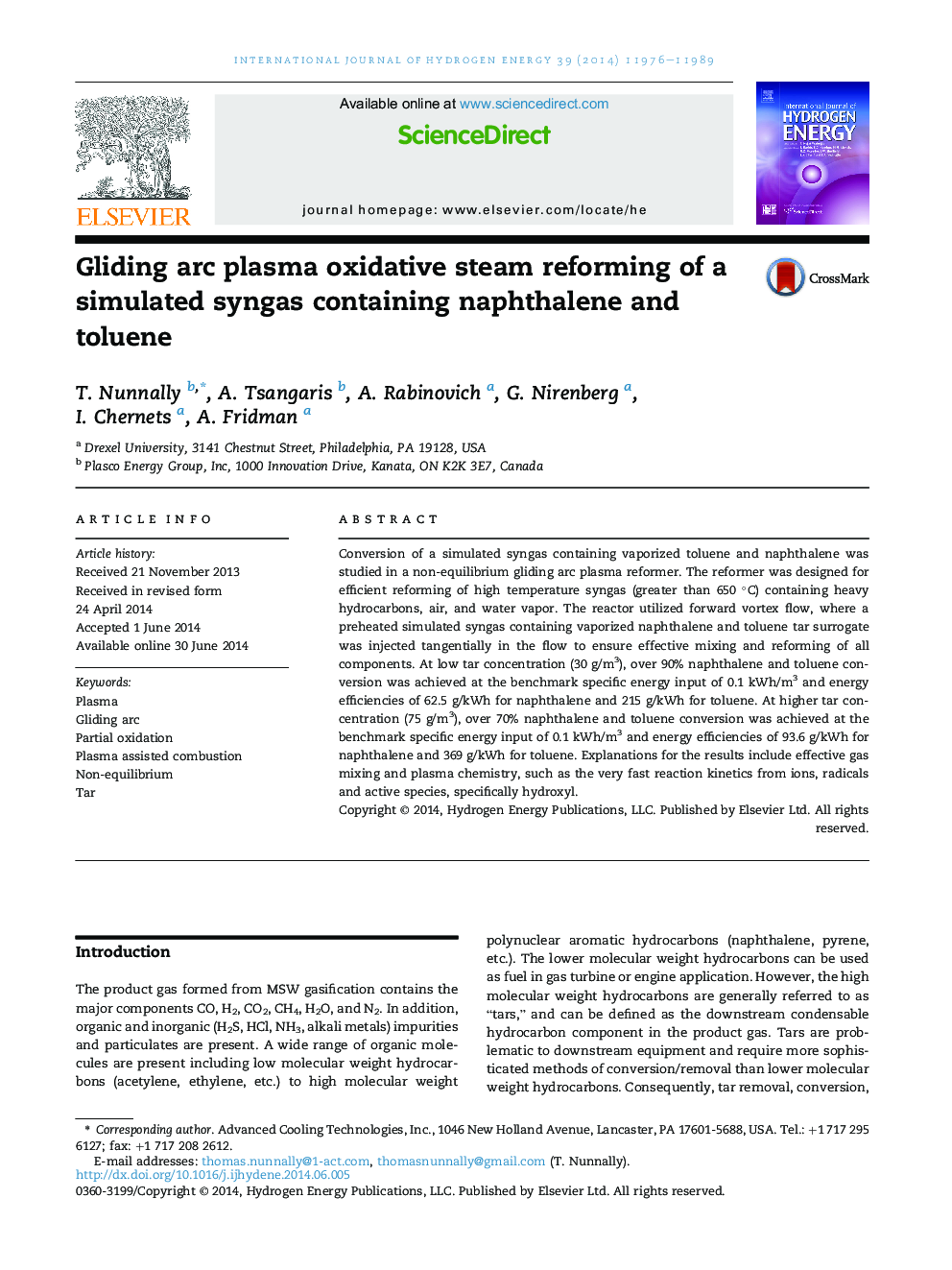| Article ID | Journal | Published Year | Pages | File Type |
|---|---|---|---|---|
| 1272996 | International Journal of Hydrogen Energy | 2014 | 14 Pages |
•We studied a simulated syngas containing vaporized toluene and naphthalene.•The simulated syngas was reformed via non-equilibrium gliding arc plasma.•Over 90% naphthalene and toluene conversion was achieved at low energy input.•Energy efficiencies show significant improvement over previous work.
Conversion of a simulated syngas containing vaporized toluene and naphthalene was studied in a non-equilibrium gliding arc plasma reformer. The reformer was designed for efficient reforming of high temperature syngas (greater than 650 °C) containing heavy hydrocarbons, air, and water vapor. The reactor utilized forward vortex flow, where a preheated simulated syngas containing vaporized naphthalene and toluene tar surrogate was injected tangentially in the flow to ensure effective mixing and reforming of all components. At low tar concentration (30 g/m3), over 90% naphthalene and toluene conversion was achieved at the benchmark specific energy input of 0.1 kWh/m3 and energy efficiencies of 62.5 g/kWh for naphthalene and 215 g/kWh for toluene. At higher tar concentration (75 g/m3), over 70% naphthalene and toluene conversion was achieved at the benchmark specific energy input of 0.1 kWh/m3 and energy efficiencies of 93.6 g/kWh for naphthalene and 369 g/kWh for toluene. Explanations for the results include effective gas mixing and plasma chemistry, such as the very fast reaction kinetics from ions, radicals and active species, specifically hydroxyl.
